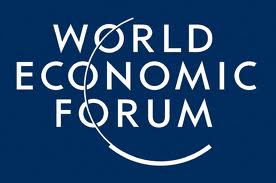- The Risk Mitigation Instruments in Infrastructure: Gap Assessment report highlights the effectiveness and use of risk-mitigation instruments in infrastructure
- The report shows that current instruments are too complex, lack adequate standardization and are too costly for the private sector to use
- Several actions could help accelerate the allocation of institutional investors’ funds towards investment opportunities in infrastructure in emerging and developing economies
 Geneva, Switzerland, 27 July 2016 – A new report launched today by the World Economic Forum calls for international financial institutions to develop new tools and products to close the infrastructure gap in emerging and developing economies. The report, Risk Mitigation Instruments in Infrastructure: Gap Assessment, offers a framework for institutions to assess gaps in the provision of risk-mitigation instruments and to mobilize much-needed long-term infrastructure investment in emerging and developing economies. Geneva, Switzerland, 27 July 2016 – A new report launched today by the World Economic Forum calls for international financial institutions to develop new tools and products to close the infrastructure gap in emerging and developing economies. The report, Risk Mitigation Instruments in Infrastructure: Gap Assessment, offers a framework for institutions to assess gaps in the provision of risk-mitigation instruments and to mobilize much-needed long-term infrastructure investment in emerging and developing economies.
According to G20 estimates, the operational commitments of major regional multilateral development banks and the World Bank Group total an estimated $80-90 billion. Despite the substantial balance sheet potential, the banks’ operations cover less than 10% of the infrastructure financing gap for emerging markets, which is estimated at $1‑1.5 trillion a year.
“International financial institutions are important in bridging the tremendous infrastructure investment gap in developing and emerging countries,” said Michael Drexler, Head of Investors Industries at the World Economic Forum. “The report finds that those instruments are not being used broadly enough and we believe there remains great potential for further development. The views of sophisticated investors controlling over $2 trillion in assets give good direction on how to create the necessary conditions for increased investment in infrastructure.”
The report outlines input from more than 40 institutional and private investors with total assets under management exceeding $2 trillion, as well as feedback from project developers and construction companies, global banking institutions, insurance and reinsurance companies, international financial institutions and professional services firms.
Specifically, the report identifies four key areas of action – addressed to international financial institutions and the broader infrastructure investment market – to allow for a significant scale-up of risk mitigation instruments:
- International financial institutions should review their existing instruments with the goal of arriving at a limited number of common, standardized products that are available globally through the relevant local/regional partner.
- The creation of a tradable infrastructure debt asset class is recommended by increasing standardization in the underlying debt instruments and related disclosure requirements.
- A harmonized dispute resolution mechanism should be established.
- A global/regional risk mitigation facility is needed.
“Given their importance to global infrastructure investment and the mitigation of several risks for investors, international financial institutions could move towards processes that allow a sizeable scale-up of risk mitigation instruments that the market wants to use,” said Thomas Maier, Managing Director for Infrastructure at the European Bank for Reconstruction and Development.
Guido Fürer, Swiss Re’s Group Chief Investment Officer and contributor to the report, added: “To address the infrastructure gap of the developing world by channelling institutional investors’ capital, it is necessary to move towards more standardized financial market instruments. Establishing a tradable infrastructure asset class would provide a major risk mitigation strategy for long-term investors.”
The report is designed to be the first overarching assessment of the availability and suitability of international financial institution risk-mitigation instruments. The World Economic Forum will build on the conclusions with its Partners to further dialogue between the private sector and international financial institutions. |

